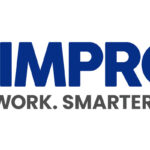You’ve won a bid, now what? What have you actually won? There is more to the success of a project than simply being given the green light.
Joseph Thomas, design engineer from AVI-SPL Inc., explored this topic at the recent NSCA Best Practices Conference held Nov. 12-13 in Marlborough, Mass.
“What does success look like?” he asked. Explore nine criteria to help you win after winning the bid.
1. Do your homework before taking on a project. Sure, it can seem enticing to say “yes” but there are key questions to address to make sure the work will be beneficial to your company, not the other way around. Important questions to ask yourself include: Does it fit our business model? Do we have the resources? Do we have the time? Do I understand the requirements? Rushing into a project without considering these answers can impact the level of success.
2. Carefully review all documentation. From contract bid docs to RFPs, addenda to RFIs,small print can have a big effect on the project. Thomas also gave instances of how a line that could seem minor in the documentation could have significant consequences, from understanding if cleanup includes overtime to whether a trailer is required to have phone and fax lines. “Is there any way you are going to read every specification?” he posed. “You better read every one that applies to you.”
3. Perform an exhaustive customer needs analysis. It is important to define in writing all functional requirements by room, application and user/internal client group. Once that is done, get a written approval of all the requirements. “If it’s not in writing, it didn’t happen,” Thomas said. Customers will be more focused if they understand there is a commitment level, he noted. “If you leave anything open for change, if you don’t define what those parameters are, will it change?” Thomas asked. The answer from the participants was a resounding “yes.”
4. Complete a site survey. Many people do not want to do this, Thomas said, because of the time involved. But he urged, “You’re not going to make money if you don’t.” There are several important factors to consider when piecing together the complete picture of the project. Whether it is travel time, noise restrictions, or parking accommodations, these elements impact the time and strategy involved.
5. Write a comprehensive scope of work. This way, all parties will have a clear understanding of the project and responsibilities. This scope should cover factors such as an anticipated schedule, liaison protocol, installation and integration process, equipment included, labor, warranty, and more. It is also important to include the exclusions the clients have to take care of, such as dependent work, electrical, millwork, network, and HVAC.
6. Map out the terms and conditions. This page is rarely read, Thomas said, and it is critical to take the time to go over it with clients. “This will help build trust, too,” he noted. Terms and conditions include acceptance, payment terms, taxes, and site preparation.
7. Vet the project before presenting the proposal. Go through the review process with operations and sales, who should resist the temptation to compete with trunk slammers, Joseph said. Once you are ready to present the proposal to the client, make a binder of important documents that cover the project. This should also include the resumes of those who are working on the project and the client’s logo should be displayed. Three steps to complete with the client include going over every part of proposal, getting their initials on the terms and conditions paragraphs, and getting the client’s signature.
8. The project isn’t actually done when the paperwork is signed. Sales managers should still stay in communication with the clients during the project, said Thomas. It is important to close the loop by scheduling a meeting to discuss if expectations were met, if there were any disappointments, and if the client would be willing to hire you again or recommend you to other clients. “Service makes you money,” said Thomas.
9. After meeting with the client, go back to your internal team for a project post mortem. Share what went right or wrong, if the initial estimates were correct, and any technical and operational challenges. “Projects in industry fail for two reasons,” said Thomas. “They were not estimated and sold correctly, or they were mismanaged.”













